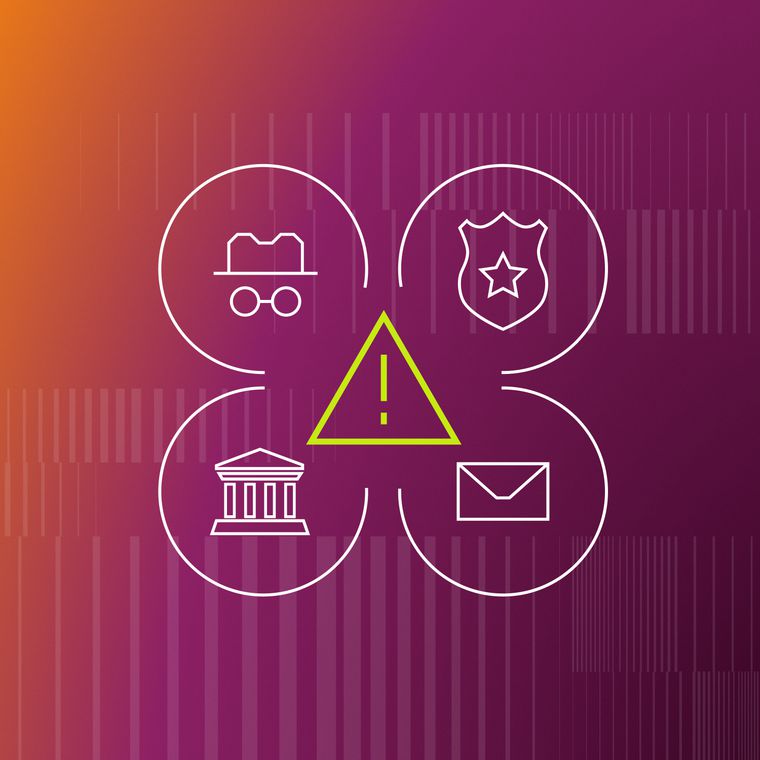9 Proven Strategies to Prevent Information Theft in Your Organization
Prevent information theft using MFA, zero-trust architecture, and more. Read on to learn about all 9 security strategies.
Over the past decade, the cost of a data breach has steadily climbed by an average of 3% annually. In 2024, that upward trend reached new heights, with the average cost skyrocketing to $4.88 million, an increase of nearly 10% from the previous year and the largest jump since 2021.
When attackers steal your company's data, trade secrets, or intellectual property, you need a defense strategy that goes beyond basic consumer identity protection. After perimeter breach, you have minutes to block attacker movement and prevent data theft before sensitive files disappear.
Your organization needs comprehensive theft prevention defenses that protect sensitive information like bank statements, account numbers, and credit cards from both external attackers and insider threats.
This guide presents nine evidence-backed strategies with practical implementation guidance to make data theft harder and recovery faster when breaches occur.
1. Deploy Zero Trust and Least-Privilege Access Controls
Zero Trust architecture treats every request as suspicious, dramatically reducing your attack surface when combined with least-privilege access controls. This approach protects sensitive information by verifying every user, device, and workload before granting access to systems containing bank accounts, social security numbers, or other confidential data.
Implement continuous verification instead of perimeter-based security. Enforce strong identity management that checks user identity, device health, and connection location before allowing any action. Apply role-based controls matching privileges to job functions, then enable temporary admin access that automatically expires after use.
Zero Trust eliminates unauthorized paths that identity thieves exploit to access sensitive data and provides detailed audit trails for compliance requirements.
2. Implement AI-Driven Email Security
Email attacks cause billions in losses annually, with business email compromise targeting bank account details and financial information. Traditional email security tools miss modern threats because attackers constantly change domains and tactics to avoid detection.
AI-driven email security solutions learn your organization's normal communication patterns, who emails whom, when, and in what tone. When messages break these patterns, the system instantly scores the risk and quarantines threats before they reach employees. This behavioral approach catches zero-day phishing, AI-generated scams, and vendor fraud that standard filters miss.
Modern email security protects against credential theft attempts and blocks malicious links before employees can click them, preventing account takeovers and data theft.
3. Encrypt Data at Rest and In Transit
Proper encryption renders stolen data worthless to attackers, even when other defenses fail. Use AES-256 for stored data and TLS 1.3 for data in transit across every system containing sensitive information like credit cards, bank statements, or social security numbers.
Store encryption keys in hardware security modules separate from production systems, rotate them regularly, and limit access strictly. Zero-knowledge architectures let you process encrypted data without holding decryption keys, eliminating disclosure risk during breaches.
Encryption satisfies GDPR's "appropriate technical measures" and HIPAA safeguards while protecting against ransomware and physical theft of devices containing sensitive data.
4. Enforce Multi-Factor Authentication Everywhere
Multi-factor authentication stops credential theft before attackers reach your data. Even basic one-time codes significantly reduce account takeovers, while phishing-resistant factors like FIDO2/WebAuthn security keys provide superior protection against sophisticated attacks.
Deploy MFA on all systems containing sensitive information: email platforms, cloud consoles, VPNs, and financial systems. Enable number-matching for push-based MFA to prevent fatigue attacks where attackers spam approval requests hoping users will accidentally approve them.
Strong authentication protects bank accounts, prevents identity theft, and satisfies regulatory requirements like PCI DSS 4.0 that mandate MFA for sensitive data access.
5. Monitor and Audit Logs Continuously
Real-time log monitoring cuts attacker dwell time and catches policy violations before sensitive data leaves your network. Stream authentication events, file access, and network traffic into a central platform that correlates anomalies across systems.
Focus monitoring on signals attackers abuse most: repeated login failures, privilege escalations, and large data transfers outside business hours. Set baselines for normal user behavior to catch deviations that indicate credential theft or insider threats targeting bank statements, social security numbers, or other confidential information.
Continuous monitoring provides the audit trails that regulations require while enabling rapid response to threats before they cause damage.
Fast, well-managed patching blocks the most common attack vector while demonstrating due diligence for compliance frameworks.
6. Deploy Data Loss Prevention (DLP) and Cloud Access Security Brokers (CASB)
Data Loss Prevention identifies sensitive content like social security numbers and bank account details before they leave your network. Cloud Access Security Brokers (CASB) control where that content can go, discovering shadow IT and enforcing access policies.
Configure DLP policies to block Social Security Numbers from leaving HR systems, quarantine confidential files sent externally, and alert when employees access unusual volumes of customer data. Modern solutions integrate with email platforms and cloud services to scan content in real-time.
DLP and CASB solutions provide the context needed to eliminate shadow IT while satisfying regulatory requirements for data protection.
7. Deliver Targeted Security Awareness Training
Security awareness training transforms your workforce from the weakest link into your strongest defense against theft prevention failures. Match training to roles: finance teams need invoice fraud recognition, while executives require BEC awareness.
Deliver brief monthly sessions covering specific threats and quarterly phishing simulations with immediate follow-up training. Track metrics like simulation failure rates and incident reporting to measure cultural transformation and identify areas needing reinforcement.
Remember, effective training reduces successful phishing attempts while creating a security-conscious culture that amplifies your technical controls.
8. Secure Endpoints and Mobile Devices
Endpoints remain the primary attack vector, requiring modern detection and Zero Trust architecture across every device accessing sensitive information. Deploy Endpoint Detection and Response solutions that provide real-time monitoring and automated quarantine capabilities.
Use application allow-listing to block unauthorized software and configure full-disk encryption to protect against physical theft. Implement mobile device management for BYOD programs, containerizing work data and enforcing VPN connections for accessing systems with bank accounts or confidential information.
Zero Trust Network Access extends protection beyond network boundaries by checking user identity, device health, and context before granting application access.
9. Establish Comprehensive Backup and Recovery
Backups prevent breaches from destroying your business operations. Follow the 3-2-1-1 rule: three copies of data, on two different media, with one copy off-site and one immutable copy that attackers can't modify or delete.
Set backup frequency based on data criticality: hourly snapshots for databases containing sensitive information, daily schedules for archival systems. Test recovery procedures regularly through weekly file restores, monthly application drills, and biannual disaster recovery exercises.
Proper backup and recovery procedures protect against ransomware while satisfying business continuity requirements in compliance frameworks.
Prevent Information Theft with the Right Tools
These nine strategies create layered defenses that protect sensitive information including bank accounts, social security numbers, and credit cards from sophisticated threats. Start with AI-driven email security and phishing-resistant MFA as foundational controls that deliver immediate risk reduction.
Ready to eliminate email-based threats targeting your sensitive data? Book an Abnormal demo to see how behavioral AI stops credential theft and business email compromise attacks before they reach your employees
Related Posts

August 19, 2025

August 18, 2025

August 14, 2025
Get the Latest Email Security Insights
Subscribe to our newsletter to receive updates on the latest attacks and new trends in the email threat landscape.